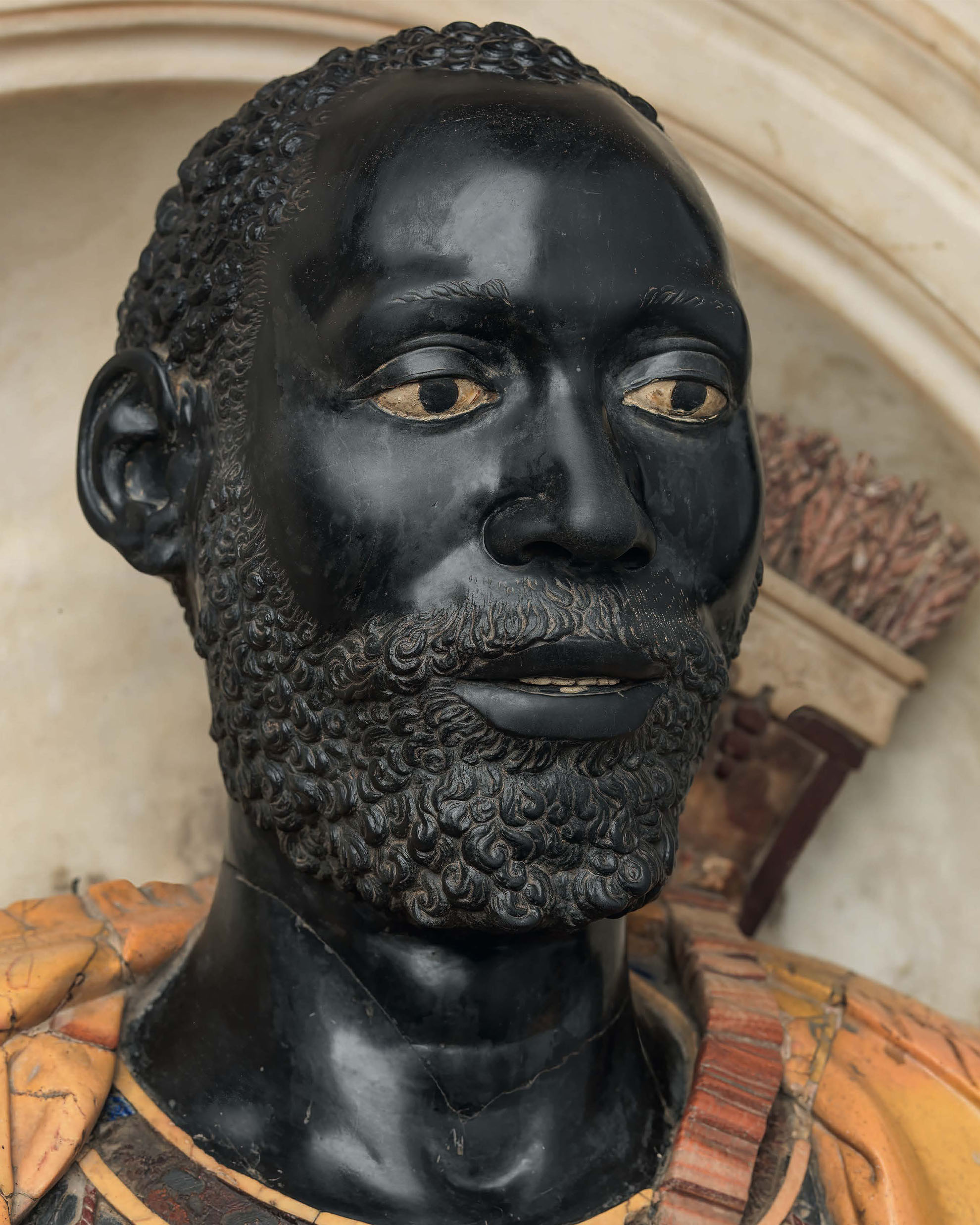
The Congolese Envoy
SEE ROME AND DIE
Caterina NapoleoneAt the turn of the seventeenth century António Manuel Ne Vunda was sent as Africa’s first envoy to the Holy See by King Álvaro II of Congo. The ship aboard which Ne Vunda sailed met with storms and pirates, and instead of landing in Lisbon, followed the route of the slave trade, all the way to Brazil. Some say the man behind the travails of this ill-starred voyage was none other than Philip III, king of Spain and Portugal, displeased at the thought of a Black man appearing before the Pope as a Christian gentleman and ambassador from Africa. For four years, Ne Vunda tried to reach Rome, and by the time he finally arrived, in early 1608, he was dying. The honors he received – and the Pope’s visit to his bedside – must have made him think he had reached Paradise, not Rome. He lived two days and died on the Feast of the Epiphany. The Romans dubbed him il Negrita. Using rare and polychrome marbles – as varied as the diverse colors of humanity itself – a little-known artist, Francesco Carnevali, sculpted the masterful portrait that commemorates the Congolese Envoy, allowing Ne Vunda to prolong his Roman sojourn in perpetuity, now as a guest of the Basilica of Santa Maria Maggiore.






